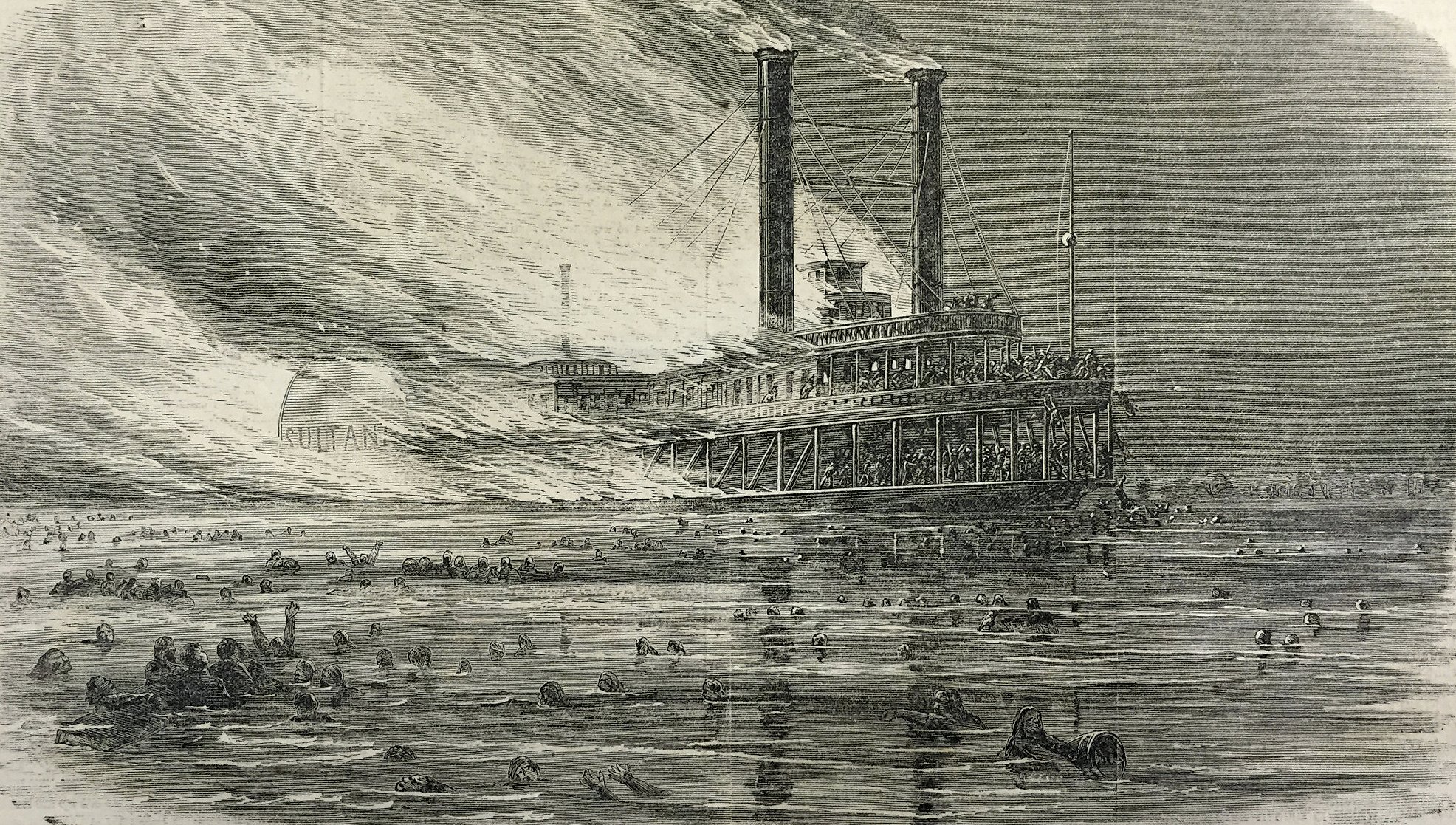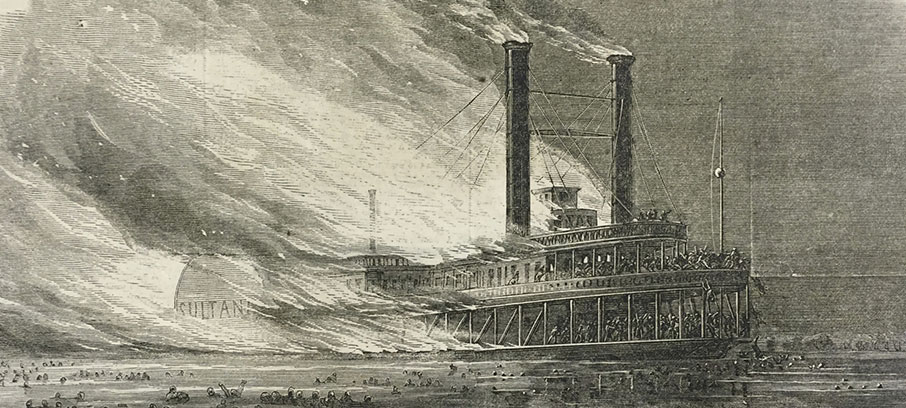- Topics
- Campaigning
- Careers
- Colleges
- Community
- Education and training
- Environment
- Equality
- Federation
- General secretary message
- Government
- Health and safety
- History
- Industrial
- International
- Law
- Members at work
- Nautilus news
- Nautilus partnerships
- Netherlands
- Open days
- Opinion
- Organising
- Podcasts from Nautilus
- Sponsored content
- Switzerland
- Technology
- Ukraine
- United Kingdom
- Welfare

The 1865 Sultana disaster has been described as America's Titanic – and it remains the worst maritime incident in US history in terms of lives lost. By Andrew Linington
The 1,719grt paddle steamer was only two years old when it caught fire and sank in the Mississippi River, with the loss of as many as 1,800 lives, after three of its four boilers exploded.
The side-wheeled Sultana had been built in 1863 by the John Litherbury Boatyard in Cincinnati, and was used to carry passengers and freight – mainly cotton – between St Louis and New Orleans.
Steamboats were a popular means of travel, but had a rather dubious safety record – with more than 230 boiler explosions between 1816 and 1848 and almost 4,000 fatalities on the Mississippi River alone from 1810 to 1840.
However, like Titanic, Sultana was seen as a safe and modern ship, fitted with equipment such as fire-fighting pumps and boiler gauges that locked open if the pressure reached dangerous levels.
But in the week before the disaster, one of the boilers cracked soon after Sultana left New Orleans. The ship docked in Vicksburg, and a local boilermaker was called in to do the repairs.
The subsequent investigation heard that the boilermaker had told the captain and chief engineer the boiler should be replaced. But after he was assured the work would be carried out when Sultana reached St Louis, he agreed to carry out a temporary repair instead.

Mississippi steamboats had a poor record with boiler explosions, but Sultana was considered a safe and modern ship – until the 1865 disaster
The American Civil War had ended only a few weeks before, and investigators discovered that Sultana's master (and part-owner) Captain James Cass Mason had struck a deal with a Union Army captain to carry prisoners of war, at $5 to $10 a head, to be repatriated to the north.
Although Sultana was designed to carry a maximum of 376 people – including 84 crew – it is estimated that there were at least 2,400 onboard when it left Vicksburg on 24 April 1865.
Early in the morning of 27 April, just seven miles north of Memphis, the repaired boiler ruptured and exploded, followed only seconds later by two others. The blasts destroyed the wheelhouse, tore through the heart of the ship and caused the twin smokestacks to topple onto the decks. A fire – which could be seen from 10 miles away – raged for five hours until the vessel sank.
The exact death toll is unknown, although estimates vary between 969 and 1,800. Many of those who initially survived died later as a result of burns or exposure in the near-freezing river water.
The official inquiry ruled that the accident was caused by mismanagement of water levels in the boiler, exacerbated by severe overcrowding, careening, the pressures of the spring current, and the inadequate repair carried out a few days earlier.
Despite the scale of the disaster, it never attracted the attention that was paid to Titanic, being overshadowed in the press by the end of the Civil War and the assassination of President Lincoln only a fortnight earlier. However, to mark the 150th anniversary of the loss, the Sultana Disaster Museum was opened in the city of Marion to serve as a memorial to the victims.
